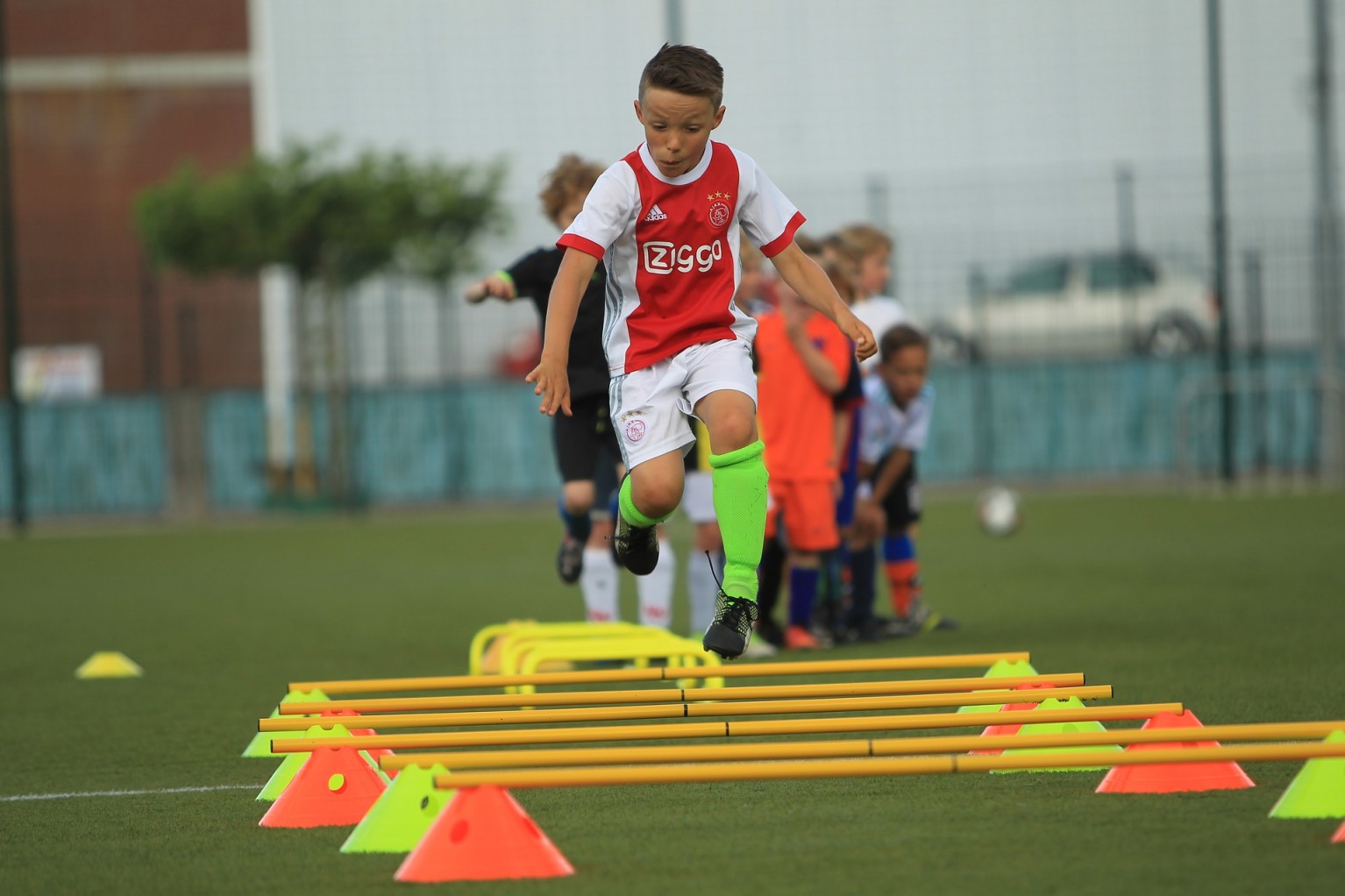

The “Overtraining” Myth
Injuries are on the rise in youth sports.
A 2009 study published in the American College of Sports Medicine has shown that in the United States, between 15-28% of youth baseball, basketball, soccer and football players are injured each year. The same study found that, in New York State alone, the number of anterior cruciate ligament (ACL) reconstructions performed on children aged 3-20 has increased by 100% from 1990 to 2009, and since the year 2000, there has been a five-fold increase in upper body injuries in youth baseball and softball players.
Among the reasons cited by medical experts for this rise in injuries in youth sports are that children are “overtraining”; playing too much sports in general, and/or playing one sport too often.
For example, many youth sports programs today, including soccer programs, require a commitment of several days per week from children beginning as young as age 6 or 7. By the age of 13, the highest competitive levels in youth soccer train year-round, with 3-4 training sessions plus at least one game per week throughout the year.
This type of early sport specialization is certainly a problem for young athletes, as many studies have demonstrated a direct link between year-round participation in only one sport, and higher incidence of injuries, as compared to participation in multiple sports.
QUOTE
“..the conventional approach of … reduc[ing] physical activity levels in youth athletes may seem intuitive, [but] it ignores one of the root causes of injury in youth sports … which is, unpreparedness for the physical demands of the sport itself.
Interestingly, though, over the past 20 years – during the exact same time period – overall rates of inactivity and obesity in children have also significantly increased.
Today children are far less active, and far more overweight than they used to be, yet at the same time, they are specializing in one sport much earlier, and playing much more of their specialized sport, than they ever did before.
In response to growing concerns over increased injury rates in North American youth sports, many sports organizations – including soccer governing bodies – have placed restrictions on the amount of soccer activity, and overall physical activity, that youth athletes can participate in.
So essentially, the “solution” proposed for youth athletes who are experiencing increased injury rates, is to have them play less sports, in order to “reduce” the risk of injury.
While early sport specialization is undoubtedly a problem, it might be possible that young athletes aren’t “overtraining” at all; that in fact, they may be “undertraining”. There is reason to believe that this undertraining has led them to become out of shape and unprepared for the demands of the sport they are participating in, leading to increased rates of injury. Here’s why:
Although the conventional approach of having sports governing bodies reduce physical activity levels in youth athletes may seem intuitive, it ignores one of the root causes of injury in youth sports – or any sports for that matter – which is, unpreparedness for the physical demands of the sport itself.
PERSPECTIVE
To put this into perspective, over the past 15 years I’ve probably conducted more fitness assessments on youth soccer players than anyone else in Canada. From the results of my assessments, it is clear that youth soccer players in the country are not in good shape.
On average, the fitness level of a “competitive” rep or academy soccer player in Canada is nowhere near the standards of professional high-performance youth soccer environments in other countries.
To give just one example, when I worked in Uruguay with the Academy of Canadian SC Uruguay, a professional club in the second division, I found that boys in the U14-U16 age categories had scores on the Yo-Yo Intermittent Recovery Test – widely considered the best measure of a soccer player’s fitness – that were between 20-30% higher than the average Canadian rep teams I had tested in the same age categories.
Despite the fact that our youth players are not in good shape, we expect them to compete – that is, to play in regular weekly competitions – with the same volume, frequency, and intensity as their professional youth counterparts, who are in much better physical condition and therefore are much better prepared for these demands.
Could it be that we need to re-think the whole concept of “overtraining”?
Could it be that in Canada, youth athletes are in fact “undertrained” – unprepared for the physical and physiological demands of sport competition – and that this unpreparedness is the actual cause of the higher injury rates we see in Canada?
Think about it this way: in any sports team (youth or adult), at any competitive level (grassroots to professional), the athletes who get injured less frequently and recover the fastest from the injuries they do incur, are the ones who are the most aerobically fit. This is because injury risk is negatively correlated to aerobic fitness, while the ability to recover from injury is strongly correlated to it.
Simply put, fit players get hurt less, and recovery faster from injuries, than unfit players.
Many recent studies support these facts, including, specifically, that athletes with higher levels of aerobic fitness:
- Have a significantly lower risk of injury (Afsharnehzad et. al., 2011)
- Recover better in between bouts of high-intensity exercise (Tomlin & Wenger, 2001)
- Perform better physically during periods of multiple high-intensity competitions (Helgerud et. al., 2001)
Thus, if youth athletes can raise their aerobic fitness levels, they will be better prepared for the demands of sports competition, including soccer competition, and as a result they will get injured less frequently, and recover quicker from any injury they incur.
TRAINING LOAD
And what is the best way for youth athletes to improve their aerobic fitness?
Through gradual, incremental increases in training load, which apply just enough stress to athletes’ physical and physiological systems to stimulate them to adapt and improve, but not so much that they overload the systems and cause them to break down.
I’ve recently published articles, Video Blogs, and conducted a 1-hour Webinar that discuss how to calculate training load, plan optimal training load, and monitor the results of training, in order to achieve the gradual incremental increases needed to produce results and reduce injury risk.
With a sound foundational understanding of the principles of periodization of training load, coaches and athletes can better prepare themselves for the demands of training and competition This will combat and eliminate undertraining, so athletes will experience fewer injuries and recover faster when they do.
.
I’d love to hear your thoughts about this topic. Drop me a line here to get the conversation started.
Afsharnezhad, T., Sefatian, A., Burbur, A. (2011). The relationship among flexibility, aerobic fitness, leg extension power and agility with lower extremity injuries in footballers. International Journal of Sports Science and Engineering, 5(2): 105-111.
Helgerud, J., Engen, L.C., Wisloff, U., Hoff, J. (2001). Aerobic endurance training improves soccer performance. Medicine and Science in Sports and Exercise, 12: 1925-1931.
Tomlin, D.L., & Wenger, H.A. (2001). The relationship between aerobic fitness and recovery from high intensity intermittent exercise. Sports Medicine, 31 (1): 1-11.
Get to know more about Soccer HUB!
Follow us on Facebook!
Leave A Reply Cancel reply
You must be logged in to post a comment.
Categories
Latest Courses
-
9 Lessons
-
1 Lesson
-
6 Lessons
You May Also Like
-
-
August 1, 2022
-
-
June 3, 2022
-
-
May 27, 2022






2 Comments
In the old days we played football in backyard for a minimum of 5 hours per day…no more overload:)). No..the issues is INDOLENCE , not sufficient money to pay coaches and all that things. I don t know for a good player to say…i don t want to train today..
I would love to have a more in-depth conversation about this